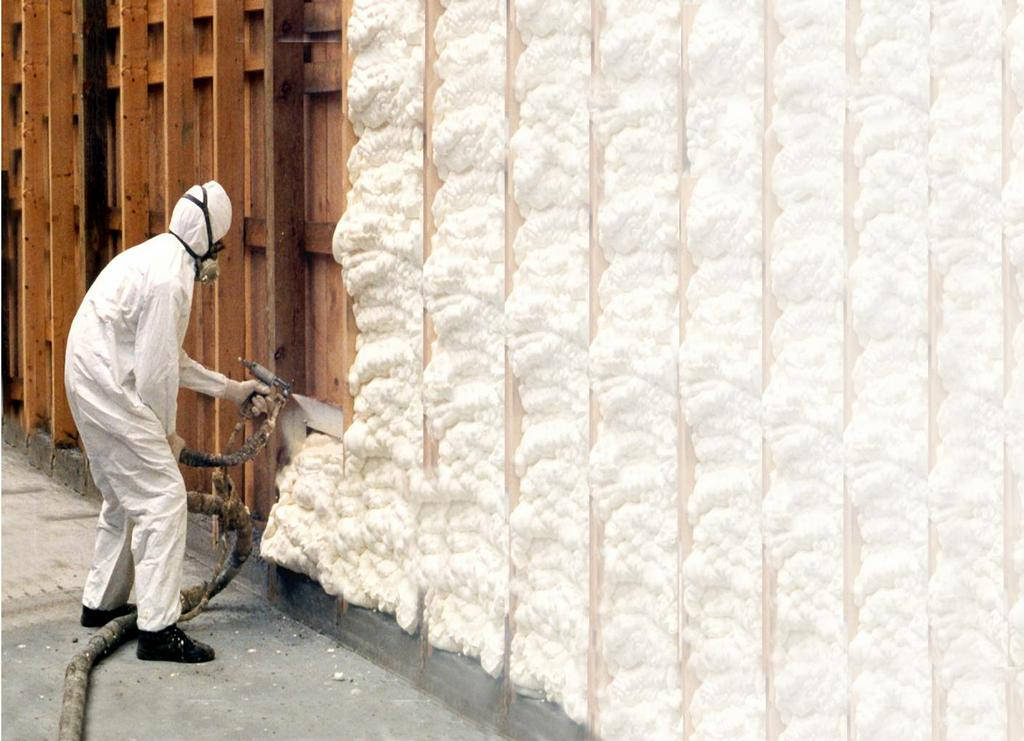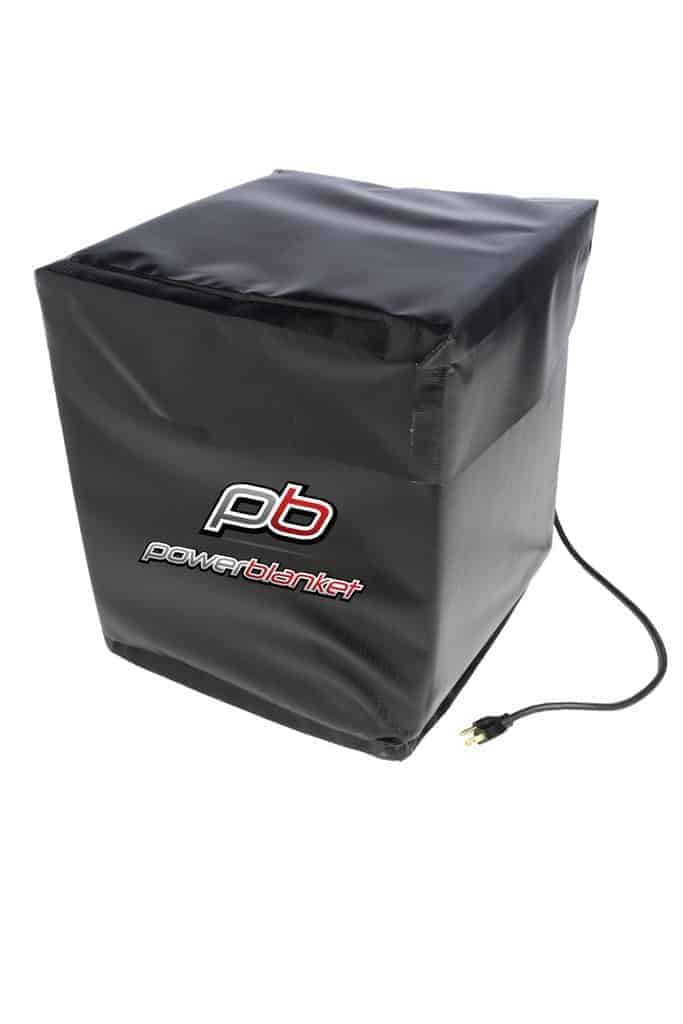What is Spray Foam Insulation
Polyurethane spray (spray foam) is an excellent option for building insulation. The r-value for spray foam 3.2-3.8 per inch for open cell polyurethane foam and 5-6.5 for closed cell foam which means it provides impressive thermal resistance properties. Additionally, polyurethane spraying provides moisture protection and soundproofing properties.
Powerblanket spray foam heaters have the capability to completely cover your cylinders and board foot kits to maintain ideal temperatures. This prevents wasted products and frustrating malfunctions. Optimized temperatures mean getting the maximum R-value from every ounce of spray foam no matter the temperature during installation.
What Is Spray Polyurethane Foam?
Polyurethane spray, or spray polyurethane foam (SPF) is a chemical product comprised of isocyanate and polyol resin. When combined, these two components cause a chemical reaction and expand up to 30-60 times its liquid volume.
Polyurethane spraying is often used as an alternative to traditional insulation (i.e. fiberglass insulation) in building and construction. Spray it directly onto roof tiles or concrete slabs, into wall cavities or into holes drilled into walls. Most commonly, it’s used in roofing and wall insulation applications.
R-Value for Spray Foam
R-Value is the Long Term Thermal Resistance (LTTR) of spray foam. Put simply, r-value demonstrates a material’s ability to resist heat flow. The higher the r-value, the better the thermal resistance. The r-value of spray foam is dependent upon the type of foam and ranges from approximately 3.2 to 6.5 per inch.
(R-Value SVG Image)
Two Types of SPF
Spray Polyurethane Foam falls into two categories: closed cell and open cell.
Medium-Density Closed-Cell Spray Foam
Medium-Density Closed-Cell Spray Foam (ccSPF) otherwise known as 2 lb foam is dense and rigid. It boasts some pretty impressive properties and benefits. For example, its r-value (thermal resistance) ranges from about 5-6.5 per inch. By comparison, the r-value of traditional fiberglass insulation is about 3-4 per inch. Additionally, when installed at a thickness of at least 2 inches, it becomes a barrier to both air and vapor transfer. This prevents heat transfer via air and mold or mildew issues that can arise from unwanted moisture. Also, closed-cell spray foam rigidity makes it an excellent option or exposed walls or other exposed applications. It’s durable enough to hold up against regular wear and tear without needing repair. The drawback is that ccSPF can be difficult to work with. After the insulation process, it can be difficult to make any changes.
Light-Density Open-Cell Spray Foam
Light-Density Open-Cell Spray Foam (ocSPF), commonly referred to as ½ lb foam, is semi-rigid; while it holds its shape extremely well, it’s sponge-like and after installation and can be crushed in your hand. As it expands and dries, it creates small open cells that fill with carbon dioxide. While its r-value is not as high as closed-cell foam, it still has great thermal resistance properties with an r-value around 3.2-3.8 per inch. When applied in a thickness of at least 3 inches, it acts as an air barrier. Unlike its closed-cell counterpart, ocSPF cannot become a vapor barrier. While not quite as thermally resistant as closed-cell foam, open-cell spray foam is more sound-dampening. Because it’s less dense and applied more thickly, it effectively absorbs more sound waves.
Benefits
Because spray foam has such great thermal resistance properties, it provides some pretty impressive benefits. The pros of using spray foam insulation over traditional fiberglass insulation include:
Save on Energy Costs
According the the US Department of Energy, 40% of home energy loss happens via air infiltration through walls, doorways, and windows. Spray foam creates an air barrier that minimizes this air permeation.
Better Insulation
Spray foam insulation insulates up to 50% better than traditional insulation. It blocks conductive, radiant and convective heat transfer; this makes it easier to keep rooms at comfortable temperatures. As mentioned earlier, the r-value (thermal resistance) of spray foam is approximately 3.2-3.8 per inch for open cell foam and 5-6.5 for closed cell.
Moisture Protection
Spray foam provides excellent moisture protection because it fills in every nook and cranny of the space. Moisture protection prevents expensive issues and damage such as mold, mildew, and rotting wood.
Noise Reduction
Polyurethane spray provides an effective barrier to airborne sound. When used as wall insulation, it hinders sound movement from room to room.
Getting the Most From Your Spray Foam
When spray foam materials and equipment become too hot or too cold, product waste and equipment malfunctions easily occur. Spray foam cylinder pressure fluctuates with temperature; when the pressure gets too high or dips too low, the cylinder will stop working optimally. Cold conditions can be especially frustrating. Pressure drops as temperatures go down and even though it seems like there is plenty of product remaining, inadequate pressure will render it unusable. Keeping things at ideal temperatures helps to make polyurethane spray go as far as possible.
Powerblanket spray foam heaters help eliminate temperature and pressure issues with your equipment. They cover the entire spray foam cylinder which maximizes the effectiveness of temperature maintenance. Call us at 888.316.6324 to maximize your yield.
Keep your business running smoothly through the cold winter months with Powerblanket spray foam heaters.





